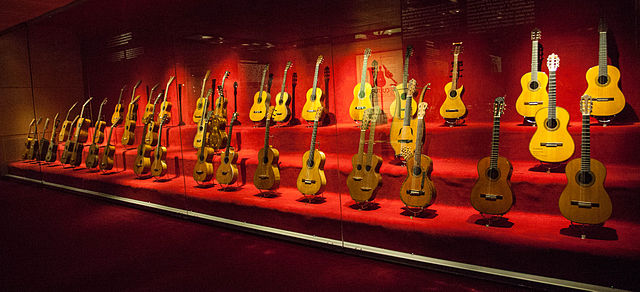An electric guitar is a guitar that requires external amplification in order to be heard at typical performance volumes, unlike a standard acoustic guitar. It uses one or more pickups to convert the vibration of its strings into electrical signals, which ultimately are reproduced as sound by loudspeakers. The sound is sometimes shaped or electronically altered to achieve different timbres or tonal qualities from that of an acoustic guitar via amplifier settings or knobs on the guitar. Often, this is done through the use of effects such as reverb, distortion and "overdrive"; the latter is considered to be a key element of electric blues guitar music and jazz, rock and heavy-metal guitar-playing. Designs also exist combining attributes of the electric and acoustic guitars: the semi-acoustic and acoustic-electric guitars.
1954 Gibson Les Paul Custom electric guitar
The "Frying Pan", 1932
The Fender Stratocaster has one of the most often emulated electric guitar shapes
Epiphone semi-acoustic hollow-body guitar
The guitar is a stringed musical instrument that is usually fretted and typically has six or twelve strings. It is usually held flat against the player's body and played by strumming or plucking the strings with the dominant hand, while simultaneously pressing selected strings against frets with the fingers of the opposite hand. A guitar pick may also be used to strike the strings. The sound of the guitar is projected either acoustically, by means of a resonant hollow chamber on the guitar, or amplified by an electronic pickup and an amplifier.
Instrument labeled "cythara" in the Stuttgart Psalter, a Carolingian psalter from 9th century Paris.
19th-century guitar made by luthier Manuel de Soto held by Spanish guitarist Rafael Serrallet
Guitar collection in Museu de la Música de Barcelona
The Guitar Player (c. 1672), by Johannes Vermeer








